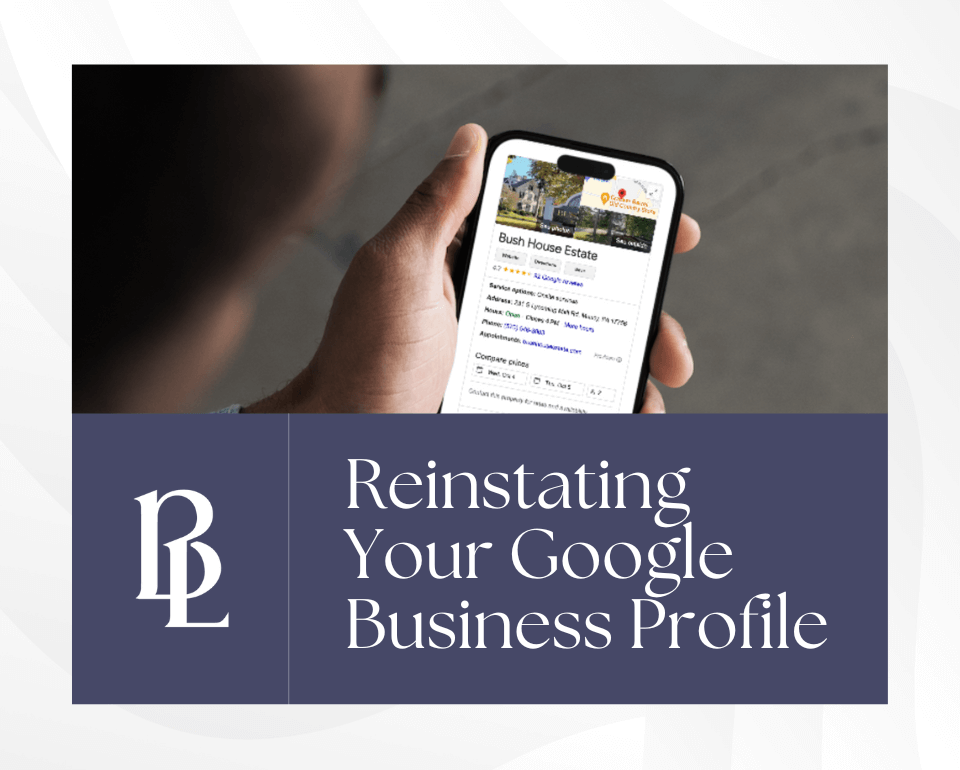
If you’re reading this blog post and don’t have a blog on your website yet, we’re glad you’re here. But as soon as you finish reading this post on how to optimize your blogs, drop everything you’re doing and channel your inner Shakespeare into your first beautifully wordsmithed blog post. On the other hand, maybe you or someone you hired is already writing regular blog posts for your website. Are you thinking it may be a waste of time or money? It most likely isn’t, and we’ll explain why.
As a wedding marketing consultant who talks with wedding industry clients on a regular basis, I can tell you that when a wedding couple visits your blog, it’s because they want additional insights about your knowledge and work. Your blog can be the ticket to converting an online visitor into a paying customer.
If you’re rolling your eyes at this point because you think there is already an abundance of information available online via blogs, we’re not here to tell you that you’re wrong, but we are here to tell you why a blog is vital to your success and how to make the most of it.

The real reason you need to keep an updated blog is that you want to convert your existing site visitors and improve the searchability of your website online from wedding couples. In plain English, if done correctly, writing regular blogs can help your website show above your competitors on Google which means the wedding couple is more likely to click to your website. And if the wedding couple is already on your site, your blog may be the ticket that wins them over.
We’re also not here to give you an exact amount of times you should write a blog post in a month or year. But what we will tell you is if you’re doing it correctly, the more the merrier.
Before we talk about optimizing your blog post, we wanted to share a few ideas with you on content to write about:
- New offerings and services
- Business updates and news
- New staff/staff certifications
- Attendance of events such as Wedding MBA
- Real weddings (photo gallery with a description of the wedding)
- Insights from your corner of the wedding industry
- Tips and advice for a local wedding (advice that is local to your geographic area)
See? There is always something interesting that you can write about. Now we’ll get on to the nitty-gritty: how to turn those blog posts into new clients.

1. Grab the Attention of the Reader through an Engaging Title
If you have a wonderfully written and edited 1,000-word essay but your post title sucks, no one will ever read it. We don’t want to be harsh, but that’s the truth. If your title isn’t grabbing the wedding couples attention, they are going to move on, possibly to another potential company.
There are a few ways you can accomplish a captivating title:
- Pique their curiosity.
- What’s something you can share with them that they might not have thought of before? Examples:
- “Our Top 10 Most Creative Wedding Centerpieces”
- “Unique Ways to Word Your Invitations”
- “The 12 Posed Photographs You’ll Want Your Photographer To Include”
- What’s something you can share with them that they might not have thought of before? Examples:
- Help them avoid mistakes.
- In the quest of a perfect wedding, wedding couples love articles on how to avoid mistakes. Sample title to borrow from:
- “5 Big Wedding Planning Mistakes You’re Making.”
- “What You Need to Know For Your Wedding Day that Vendors Won’t Tell You”
- In the quest of a perfect wedding, wedding couples love articles on how to avoid mistakes. Sample title to borrow from:
- Help them save money.
- Most couples are concerned with their bottom line, which is why money-saving articles are popular. Examples:
- “The Top 4 Best Ways to Save Money on Your Wedding”
- “How a DIY Wedding Can Cost You More Money”
- Most couples are concerned with their bottom line, which is why money-saving articles are popular. Examples:
2. Make Your Images and Videos Work in Your Favor.
Okay, we’re hoping that you already know that you need to add in at least a couple photos and/or videos to your blog post. And we really hope that they are original photos (especially if you are a wedding photographer, wedding florist, wedding venue or wedding planner). But if you’re struggling to find visuals, you can grab some great, free for commercial use images on Unsplash, Pexels, and the Chamber of Commerce’s Find a Photo platform. If you want to create your own graphics, try using Canva. It’s so easy to use, even us Baby Boomers can get the hang of it in a few seconds. For you other tech whizzes and designers out there, Photoshop is a great (and expensive) tool to use to create your own graphics.
Now that you have visuals for your blog, you can “optimize” your blog post. What does that mean? It simply means to make the image size as small as possible and make it improve your online searchability. Here’s how you do that:
- If you use WordPress for your website, download the plugin WP Smush to automatically resize (smush) your images. The smaller the images, the happier Google is, and we live to make Google happy, right? If your images are slowing down your website, Google will penalize you. Or worse, the wedding couple may not want to wait for your post to load and leave your website altogether.
- Unless it has a transparent background, save your images as .JPG instead of .PNG. WP Smush can convert all of your .PNG files (unless they have a transparent background) for you, so don’t worry about reuploading everything if you download this plugin.
- Make sure you save the filename as something descriptive. Uploading photos titled “43763802_10156831575275406_5225402944848920576_n.jpg” is not a great way to improve your SEO. Instead, make the title of the photo describe the photo, such as “Kaitlyn and Rebecca’s Bridal Photo Shoot at the DoubleTree Hotel in Orlando FL.”
- Create “alt text” for your image. The alt text describes what is in the picture. It helps Google and wedding couples find your images when you have alt text that is closely related to their search terms.

3. Make Sure Your Blog Post is Well-Written and Easy to Read.
Picture yourself as a wedding couple searching for a vendor. AND YOU STUMBLE ACROSS THIS WEBSITE THAT HAS A BLOG IN ALL CAPS AND EXCLAMATIONS!!!! Or typoes everywhere. You wouldn’t take them very seriously at all, would you?
Each blog post should be an artistic expression of your wedding business. A reflection of what wedding couples should expect if they were your client. So, to make the most of your blog post, it should be packed with useful, in-depth information that is organized like an essay, aside from a few minor adjustments:
- An introduction to your topic with an attention-grabbing sentence.
- Body paragraphs with nicely spaced information
- A conclusion and a call to action if suitable
Want to up your writing game? Download the free Google Chrome extension, Grammarly, and employ the “Readability” section in Yoast SEO, which will help you with sentence structure, transitions, and more.
Hemming is helpful to use while writing a blog post:http://www.hemingwayapp.com/
WebFX is good to use if they want to go back and check the readability of their old blog post: https://www.webfx.com/tools/read-able/

4. Add in a Pinch of the Right Keywords
And just what are keywords, anyway? They’re basically phrases that describe your business that you can use to increase your online visibility, such as “tropical wedding florist in Orlando, FL” or “destination wedding specialist in Columbus, OH”. They describe who you are and are also the search queries people are typing into Google. Therefore, when a wedding couple types in “tropical wedding florist in Orlando, FL,” you’re likely to show up near the top. Keywords are great to lace into your website and blog posts but don’t force them out of context. Believe it or not, if you abuse a keyword phrase over and over or use it out of context, you will upset the Google overlords and your SEO will decrease. So what’s the right amount? Our suggestion is to use keywords naturally as they fit into the context.
Take this post for example: we’ve used the phrase “wedding industry” and “wedding business” on a few occasions. Naturally, we’re looking for wedding industry clients, so we will utilize keywords that are closely related to this.
If we tried to force a keyword, such as “wedding industry blog,” into this post unnaturally, the wedding industry blog keyword might become obsolete if you continue to use the phrase “wedding industry blog” over and over because Google doesn’t like it when you repeatedly use a keyword, such as wedding industry blog. See what we did there? Sorry, Google overlords! Don’t ruin the integrity of your post by writing unnaturally and forcing keywords. Like Alan Berg says don’t sound like “Rain Man” by forcing words that don’t ebb and flow.
Need help determining what keywords you should use? There are tools for that!
- Google Trends
- Google Trends is a free tool that lets you search how interested people are in a keyword. One way you can look at how well a keyword is doing is to look the line graph that pops up after you search for a term. It shows how interested people were about a search term over time.
- You can also view how well the search terms does by subregion and get more information on other terms people searched for.
- Google Trends is a free tool that lets you search how interested people are in a keyword. One way you can look at how well a keyword is doing is to look the line graph that pops up after you search for a term. It shows how interested people were about a search term over time.
- Keyword Tool
- Keyword Tool provides a list of keyword suggestions of popular search terms your target audience searched for. Although it does not provide additional information about how many people typically search for the term per month, it does list more keyword suggestions than other free keyword tools.
- WordStream
- If you really want to know how many people are searching for a term, you can use WordStream. When you enter in a term, it only gives you 10 keywords, but it will tell you how many searches are expected from certain keywords, which is something not many other keyword research tools offer.

5. Use Yoast SEO to Round out Your Title and Meta Descriptions
We touched on Yoast SEO earlier for readability, but what it is really known for is helping you improve the title and meta description for any and all pages and posts. Here is an example of a Title and Meta description:
The title starts with “Northern Colorado’s Wedding Florist” and the Meta description starts with “Bliss Florist is the premier event & wedding…” Okay, so if you don’t manually write your own title and meta description, Google pulls the title from your “post title” and the description from the first two sentences or so of your blog post. To avoid this and to optimize your blog post, manually rewrite the title to be descriptive, while also containing your focus keyword, and make sure the meta is also descriptive and enticing, while also containing your focus keyword. Want to learn more about how to write descriptive title and metas? Yoast has an entire blog post dedicated to this.
Like your wedding business website, your blog posts should be working just as hard as you. And if you make sure to take measures to optimize your blog posts, you can increase the right type of website traffic you need to generate leads for your wedding business.
But if you’re thinking that this is TMI, you don’t have the time to put toward blogging, or you just aren’t interested in writing, feel free to contact me for consulting, coaching, web design, blogging, or other help you need to grow your wedding business.





